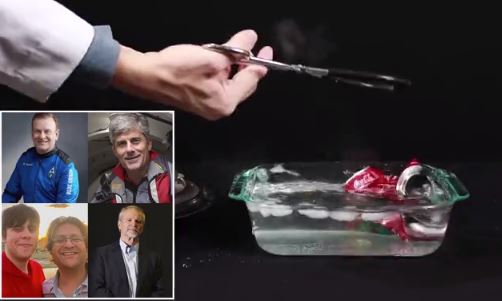Video of a soda can being violently crushed by water pressure demonstrates what may have happened to doomed sub
A video of a Coca-Cola being instantly crushed by water pressure gives an idea of what likely happened to the destroyed Titan submersible that claimed five lives.
The pressure chamber on board OceanGate’s 22-ft vessel suffered a ‘catastrophic implosion’, authorities revealed on Thursday, and the men aboard tragically perished.
The implosion would have been caused by a sudden change from low to high pressure inside the sub, possibly triggered by a defect in the sub’s walls. Experts have said the ‘flawed’ carbon fiber hull may have contributed to the disaster.
Experts say the crew and passengers would have been crushed within a fraction of a millisecond, an event so fast it would have been over before they realized what was happening and so violent it’s unlikely to leave anything but a mist of human remains.
A video posted by James Hambley, a YouTuber who goes by the alias Bearded Science Guy, shows a similar implosion happening to a Coke can.
‘Filling the can with steam and then exposing that steam to cold water causes it to condense back into water leaving no gas particles on the inside of the can to exert pressure outward,’ Hambley said.
The high energy of heated water vapor, in other words, exerts a much higher pressure on its surroundings inside the can’s steamy air than an equal amount of cool liquid water would.
It’s the same principle that has powered the pumps of steam locomotives since the 19th Century.
Creating this change in pressure inside the Coke can, cooling the hot high-pressure steam back to cold water droplets, works as a scale model of the pressure changes that happened during the OceanGate sub’s final brutal moments.
Just like the air around the can, which remains unchanged, the powerful ocean pressures would have rushed in to fill the vacuum of the new lower pressure inside the submersible, crushing its wealthy occupants in an instant.
In the depths of the deep ocean, the pressure increases to such an extent that only specially-adapted organisms can survive.






















